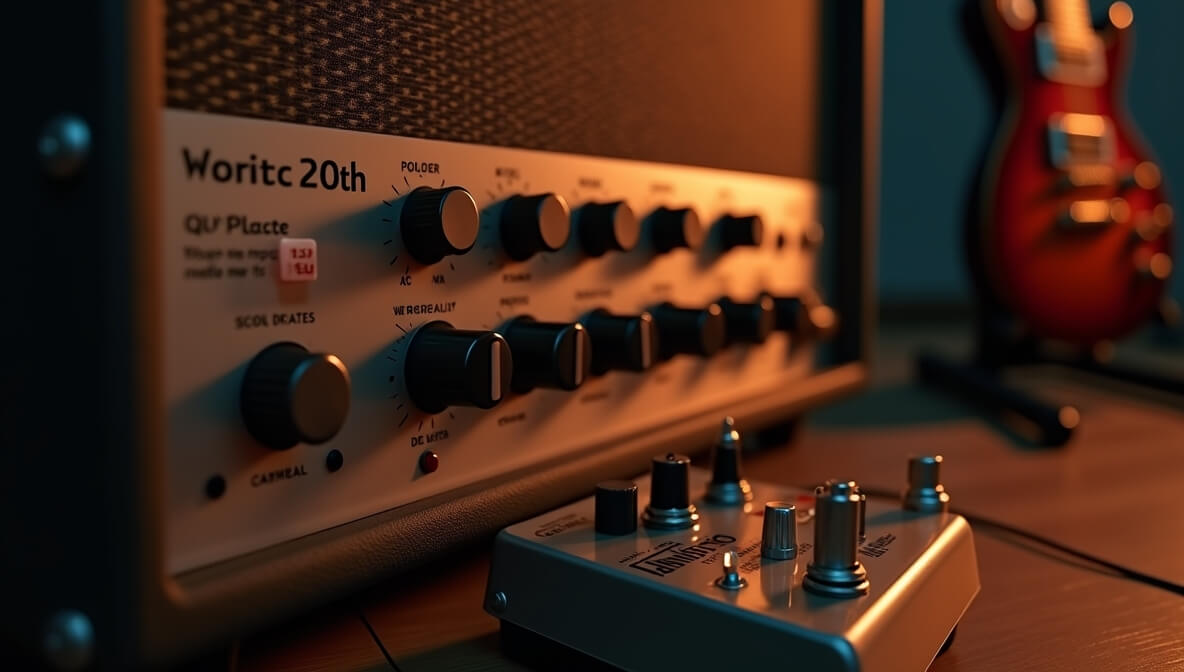August 14, 2025

Your guitar tone is more than just how your instrument sounds — it’s how you express your identity as a guitarist. The notes you play may be the language, but your tone is the emotion behind the words. It’s what allows a slow blues lick to sound mournful or a metal riff to feel explosive.
From legends like Jimi Hendrix and Eric Clapton to modern masters like John Mayer or Tosin Abasi, one thing unites them: a recognizable, intentional tone that communicates far more than the scales or chords they’re using.
In this guide, we’ll take a deep dive into why tone matters, what shapes it, and how you can develop and refine your own sound.
Tone is your musical fingerprint. It’s what listeners remember — and it says as much about you as your playing technique.
Tone is not just about gear. It's about touch, taste, and intent.
If you're new to tone exploration, you might also benefit from understanding the foundations of music itself. Start with The Ultimate Guide to Music Reading for Beginners — Notes, Rhythms, and Symbols to connect theory with feel.
There’s no single element that “creates” your tone — it's a chain of decisions, tools, and techniques working together.
The guitar itself is the foundation of your tone. Different body types, woods, necks, and bridges affect resonance, sustain, and frequency response.
Everything down to your string gauge, pickup height, and tuning plays a role. If you're recording or playing live, pairing the right guitar with the right output device is critical — check out Understanding Audio Interfaces to learn how to capture that tone effectively.
Pickups are your guitar’s voice box — they turn vibration into signal. And they drastically affect tone:
Your guitar’s wiring, tone caps, and potentiometers all influence the high-end roll-off and dynamic response. Even rolling back your tone knob slightly can sweeten up harsh frequencies — an old-school trick still used by seasoned players.
Amps don’t just make your guitar louder — they define how it responds. Choosing the right amp is one of the most important tone decisions you’ll ever make.
Want a clear signal path from guitar to amp to DAW? Understanding Audio Interfaces explains how to route your signal cleanly and efficiently.
And if you’re thinking about which digital workspace to record that tone in, read Digital Audio Workstations Explained to match your tone shaping with the right software environment.
Effects are tools to enhance, alter, or drastically shape your tone. But remember — pedals should serve the tone, not override it.
Don’t forget: the order of pedals in your chain makes a difference. And the best tone might come from using fewer pedals more intentionally.
If compression confuses you, Compression in Music Production — A Beginner's Guide breaks it down in a guitarist-friendly way.
You could give the exact same rig to two players — and they’d sound different. That’s because your fingers are the final tone shapers.
Your tone is shaped by:
Your technique tells the guitar how to sing. That’s why daily refinement — slow, focused, musical playing — leads to better tone.
Sharpen your ears and feel with Ear Training Exercises — How to Hear Chords and Melodies, which will help you identify tonal subtleties and shape your sound intentionally.
Want to find your sound? Start here:
And when you feel stuck or unsure how to improve, check out Overcoming Plateaus — Strategies for Breaking Through Learning Barriers for a mindset reset.
Sometimes, the best tones happen when you try something different:
And if you’re working in a DAW or want to layer guitar tones in a mix, visit Understanding the Basics of Mixing and Mastering to learn how guitar tone fits within the broader soundscape.
The tone you have today isn't your final form. As your musical voice grows, so will your gear, tastes, and preferences. That’s part of the journey.
Whether you're shaping tone for a solo bedroom session or a full studio production, your sound is a reflection of who you are in that moment.
Great guitar tone isn’t just about expensive gear or endless tweaking — it’s about intentional expression. Tone is the voice that connects you with your audience, your band, and even yourself.
Stay up to date with the latest tips, expert insights, product reviews, and step-by-step guides to help you grow, create, and succeed—no matter your industry or passion.